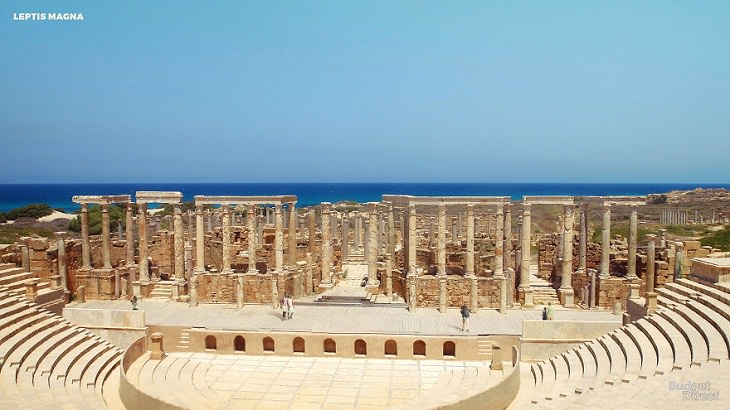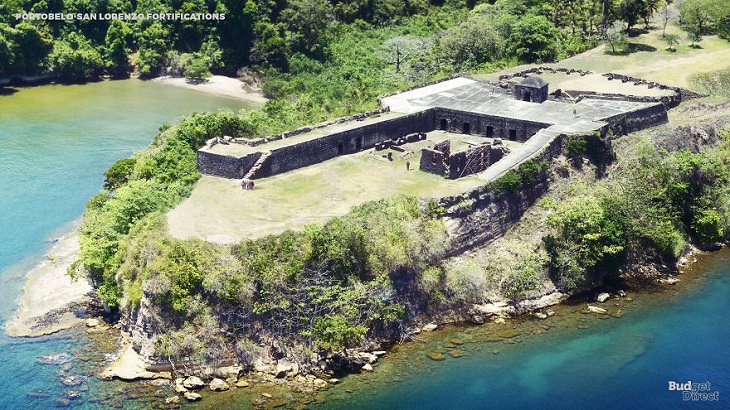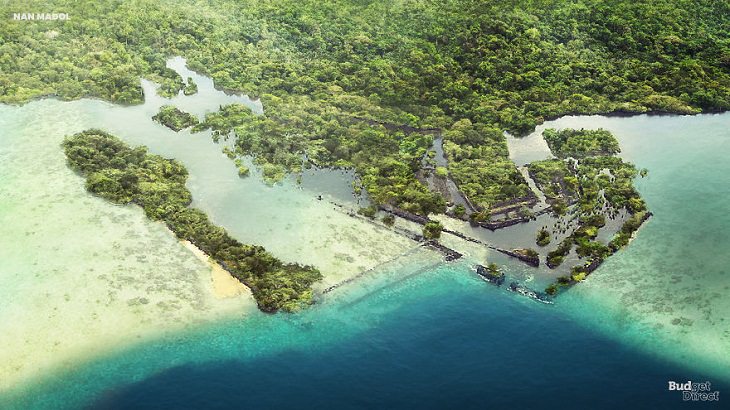Hatra is an old ruined ancient Parthian city in the Al-Jazīrah region of present-day northern Iraq, located 180 miles (290 km) northwest of Baghdad and 68 miles (110 km) southwest of Mosul. Founded in the 3rd or 2nd century, under the Seleucid kingdom, Hatra rose to become the symbol of Parthian power and was its religious and trading center in its glory days.
Hatra was the capital of the first Arab Kingdom and was referred to as Beit ʾelāhāʾ (House of God) because of the temples celebrating Greek, Aramean, Mesopotamian, and Arabian gods. It was ruled by a dynasty of Arabian princes and prospered under them for a long time. Hatra was a fortified city of circular design that allowed it to thwart many attacks, including sieges by Roman forces. Unfortunately, the city was destroyed in the 3rd century by the Sāsānian king Shāpūr I.
Hatra is still well-preserved and contains countless sculptures and statues along with various temples. The site is enclosed by inner and outer walls that are nearly 4 miles (6.4 km) in circumference and are assisted by more than 160 towers. In 1985 Hatra was designated as a UNESCO World Heritage site. While the Iraqi government initiated a major restoration project in the 1990s, the site was unfortunately looted of many important artifacts in that period. Several more relics were again stolen from the site when the National Museum of Iraq was pillaged in 2003.
2. Leptis Magna (District of Khoms, Libya)
Leptis Magna was once a shining glory of the Roman Empire. Now in Libya, this is the birthplace of Roman emperor Septimius Severus (146-211) who is widely known for reforming the military in his times. Under his reign, Leptis Magna shined as one of the greatest cities on the entire continent of Roman Africa. Its magnificent public monuments, harbor, market-place, storehouses, shops, and residential districts are fine examples of Roman advances in urban planning and architecture. Unfortunately, like so many other Roman cities, Leptis Magna declined over a period of time and by the mid-4th century, it was largely abandoned and was left to be sacked by invaders.
Located 62 miles (100 km) southeast of Tripoli on the Mediterranean coast of Libya, Leptis Magna was buried under sand until the early 20th century. Even today, however, the ruins of this historic site still have traces of its past beauty in the form of the excavated shell of its amphitheater (56 A.D.) and its old forum, among other broken structures that show why it was such an important part of the city in early Roman times.
Leptis Magna was designated a UNESCO World Heritage site in 1982.
3. Portobelo-San Lorenzo Fortifications (Province of Colon, District of Cristobal, Panama)
Portobelo and San Lorenzo were Spanish fortifications on the Caribbean coast of Panama. These fortifications were built to protect transcontinental trade by the Spanish Crown in the 1590s. The forts are varied in style and design – some were built to merge the natural features of the coastline, some have a medieval look and the others represent the neo-classical style. Apparently, the designs were adapted to changing needs over three centuries.
Portobelo was the primary port in the Caribbean for trade with the Americas while San Lorenzo was one of the most visited ports in the 17th and 18th centuries. These forts are believed to have been built over two centuries and are considered milestones in the evolution of Spanish colonial military architecture. Unfortunately, these fortifications are under threat today from natural forces. The Chagres River, which runs along the side of the fort, is eroding away the structure over time. Furthermore, the increasing humidity of the area due to climate change is also causing damage to it.
The Portobelo-San Lorenzo fortifications were added to UNESCO’s danger list in 2012.
4. Nan Madol (Temwen Island, Federated States of Micronesia)
Nan Madol is a series of more than 100 islets off the south-east coast of Pohnpei in Micronesia. It has the distinction of being the only ancient city ever built upon a coral reef and even inspired the city of R’lyeh in H. P. Lovecraft’s 'Cthulhu Mythos'. Historians believe that Pohnpei islanders used basalt and coral boulders to build the islands sometime around the 12th to 13th centuries. However, evidence of the earliest human activity on the islands dates back to the first or second century B.C. Despite being an engineering marvel, there are no records to prove exactly when it was built and how the unusual and remarkable construction was performed.
The name Nan Madol means “spaces between” and refers to the canals that intersect the ruins. The ruins are believed to represent a ceremonial center of the ruling elite caste of the Saudeleur dynasty, a dynamic period in Pacific Island culture. Remains of stone palaces, temples, tombs, and residential domains are among the many structures found in these isles.
The population of Nan Madol was more than 1000, which included a large number of commoner servants. The site has been unused since the 1820s but the massive edifices and the technical finesse of the various megalithic structures here are evidence of the sophisticated social and religious practices of the island societies from centuries ago.
5. The Old City of Jerusalem and its Walls (Jerusalem, Israel)
The Old City of Jerusalem and its Walls is a UNESCO World Heritage Site in Israel. Jerusalem is important to Jews, Christians, and Muslims because of the major structures and events that took place in the city. These structures were built over hundreds of years and among the most precious of them are the limestone Wailing Wall and the Dome of the Rock.
The Wailing Wall (also called Western Wall) is a place of prayer and pilgrimage sacred to the Jewish people. The wall dates back to the 2nd century and is the only remains of the Second Temple of Jerusalem that was destroyed by the Romans in 70 B.C. The Dome of the Rock and the mosque below it are important to Muslims who believe that this is the sacred place the Prophet Mohammed came from Mecca to pray with souls of the prophets before leaving for heaven. The dome’s gold-plated roof dates to the mid-twentieth century.
UNESCO put the Old City on the endangered list due to “severe destruction followed by rapid urbanization.” Archeologists estimate it to be one of the oldest continuously inhabited cities in the world. Today, construction around the city has compromised conditions around the prominent site.
Share this story with other history buffs...





